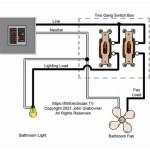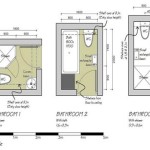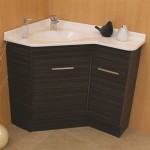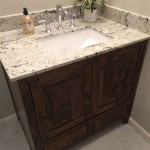Are Vents Required In Bathrooms? Navigating Building Codes and Ventilation Needs
Bathroom ventilation is a critical aspect of building design and construction, directly impacting indoor air quality, structural integrity, and overall occupant health. The presence or absence of adequate ventilation is often dictated by local building codes, which are meticulously crafted to ensure safety and well-being. Understanding these codes and the rationale behind them is essential for homeowners, builders, and anyone involved in the renovation or construction of residential and commercial properties.
The primary purpose of bathroom ventilation is to remove moisture-laden air generated from activities such as showering, bathing, and handwashing. Without proper ventilation, this moisture can condense on surfaces, leading to a range of problems. These problems include the growth of mold and mildew, which can trigger allergic reactions and respiratory issues. Furthermore, excessive moisture can damage building materials such as drywall, paint, and wood, potentially leading to costly repairs.
Beyond moisture control, bathroom ventilation also plays a role in removing odors and airborne pollutants. Perfumes, cleaning products, and even human waste contribute to the build-up of undesirable odors in the bathroom. Ventilation systems help to exhaust these odors, creating a more comfortable and hygienic environment. Certain cleaning products and personal care items can release volatile organic compounds (VOCs) into the air, posing potential health risks. Proper ventilation helps to dilute and remove these VOCs, improving indoor air quality.
The requirements for bathroom ventilation frequently vary depending on the jurisdiction and the specific building code adopted. Generally, building codes mandate some form of mechanical ventilation, such as an exhaust fan, or natural ventilation, such as an operable window. The specifications for these ventilation methods, including airflow rates and installation guidelines, are typically outlined in the code.
Understanding Building Codes and Ventilation Requirements
Building codes are legal documents that specify minimum standards for the design, construction, and maintenance of buildings. These codes are adopted and enforced by local jurisdictions, such as cities, counties, or states. The specific codes in effect can vary significantly from one location to another. Therefore, it is crucial to consult the local building department or a qualified building professional to determine the applicable requirements for a particular project.
Most building codes address bathroom ventilation, typically requiring either mechanical or natural ventilation. The International Residential Code (IRC), a widely adopted model code, provides a common framework for residential construction. The IRC typically mandates a minimum exhaust rate for bathroom fans, usually specified in cubic feet per minute (CFM). The required CFM is often based on the size of the bathroom. For example, a small bathroom might require a fan rated at 50 CFM, while a larger bathroom might require a more powerful fan.
The codes also typically specify details about the fan's installation, including the ductwork requirements and the location of the exhaust termination point. The exhaust duct must be properly sized and sealed to ensure efficient airflow. The exhaust termination point should be located outdoors, away from windows, doors, and other air intakes, to prevent the re-entry of moist air into the building. Some jurisdictions may have specific requirements for the type of ductwork used, prohibiting the use of flexible ductwork due to its tendency to restrict airflow.
Natural ventilation, typically achieved through an operable window, can sometimes be used as an alternative to mechanical ventilation. However, the window must meet specific size requirements, and the ability to open the window must not be obstructed. Furthermore, the effectiveness of natural ventilation depends on weather conditions and occupant behavior. In many climates, natural ventilation alone may not be sufficient to adequately remove moisture and odors from the bathroom, especially during periods of high humidity or frequent use. Therefore, mechanical ventilation is often the preferred and more reliable method of ensuring proper bathroom ventilation.
In addition to general ventilation requirements, some building codes may include specific provisions for bathrooms with showers or bathtubs. These provisions may require higher exhaust rates or the use of specialized ventilation systems to address the increased moisture load generated by these fixtures. For example, a bathroom with a steam shower may require a more powerful fan or a dedicated ventilation system designed to handle the excessive moisture produced by the steam.
The Role of Ventilation in Preventing Mold and Moisture Damage
The prevention of mold growth and moisture damage is a primary objective of bathroom ventilation. Mold thrives in damp, poorly ventilated environments. When moisture accumulates on surfaces, such as walls, ceilings, and floors, it creates an ideal breeding ground for mold spores. Mold growth can lead to a range of health problems, including allergic reactions, asthma exacerbations, and respiratory infections. Certain types of mold, such as Stachybotrys chartarum (black mold), can produce toxins that pose serious health risks.
Proper ventilation helps to prevent mold growth by removing moisture from the air and reducing the relative humidity in the bathroom. By exhausting moist air to the outdoors, ventilation systems prevent condensation from forming on surfaces. This reduces the amount of available moisture that mold needs to grow. A properly sized and functioning exhaust fan can effectively remove moisture generated during showering or bathing, keeping the bathroom dry and mold-free.
Moisture damage can also occur in the absence of adequate ventilation. Excess moisture can seep into building materials, causing them to deteriorate over time. Drywall can become soft and crumbly, paint can peel and blister, and wood can rot and warp. These types of damage can lead to costly repairs and renovations. Moisture damage can also compromise the structural integrity of the building, potentially leading to safety hazards.
Ventilation systems help to protect building materials from moisture damage by preventing the accumulation of moisture in the bathroom. By removing moist air, ventilation systems prevent the saturation of building materials, preserving their integrity and extending their lifespan. This can save homeowners significant amounts of money on repairs and replacements in the long run.
To maximize the effectiveness of ventilation in preventing mold and moisture damage, it is important to operate the exhaust fan during and after showering or bathing. Running the fan for at least 20 minutes after showering or bathing helps to remove residual moisture from the air and surfaces. It is also important to ensure that the fan is properly maintained and that the ductwork is clean and unobstructed. Regular cleaning of the fan and ductwork can help to ensure that the system is operating efficiently and effectively.
Types of Bathroom Ventilation Systems and Their Applications
Various types of bathroom ventilation systems are available, each with its own advantages and disadvantages. The most common type of bathroom ventilation system is the exhaust fan, which is typically installed in the ceiling or wall. Exhaust fans use a motor-driven fan to draw moist air out of the bathroom and exhaust it to the outdoors. Exhaust fans are available in a range of sizes and airflow rates, allowing homeowners to choose a model that is appropriate for the size of their bathroom.
Another type of bathroom ventilation system is the through-the-wall fan. These fans are installed directly in an exterior wall and exhaust air directly to the outdoors. Through-the-wall fans are often used in bathrooms where it is not possible to install ductwork to vent a ceiling-mounted fan. These fans are typically less powerful than ceiling-mounted fans, but they can still provide adequate ventilation in small bathrooms.
Timer-activated exhaust fans are becoming increasingly popular. These fans are equipped with a timer that automatically shuts off the fan after a pre-set period of time. Timer-activated fans can help to ensure that the fan is operated for an adequate amount of time after showering or bathing, even if the occupant forgets to turn it off. This can help to maximize the effectiveness of ventilation in preventing mold and moisture damage.
Humidity-sensing exhaust fans are another type of ventilation system that is gaining popularity. These fans are equipped with a sensor that detects the humidity level in the bathroom. When the humidity level reaches a certain threshold, the fan automatically turns on. When the humidity level drops below the threshold, the fan automatically turns off. Humidity-sensing fans can help to ensure that the fan is only operated when it is needed, saving energy and reducing noise pollution.
In some cases, a heat recovery ventilator (HRV) or an energy recovery ventilator (ERV) may be used to provide bathroom ventilation. HRVs and ERVs are whole-house ventilation systems that exchange stale indoor air with fresh outdoor air. These systems can also recover heat or energy from the exhaust air, reducing energy costs. HRVs are typically used in colder climates, while ERVs are typically used in warmer climates. While primarily whole-house systems, they can be integrated to provide dedicated ventilation to bathrooms.
The selection of the appropriate ventilation system depends on various factors, including the size of the bathroom, the climate, the building design, and the budget. It is important to consult with a qualified HVAC professional to determine the best ventilation system for a particular application. Proper installation and maintenance are also essential to ensure that the ventilation system operates efficiently and effectively.
In conclusion, the requirement for bathroom vents underscores their significance in maintaining a healthy and structurally sound indoor environment. Building codes typically mandate specific ventilation methods to combat moisture build-up, odor control, and the removal of airborne pollutants. These regulations are designed to minimize the risk of mold growth, structural damage, and adverse health effects associated with poor ventilation. Understanding the specific requirements of your local building code and selecting the appropriate ventilation system are crucial steps in ensuring a safe and comfortable bathroom environment.
Does Every Toilet Need A Vent Pipe Quora

Does Your Bathroom Need An Exhaust Fan Mr Rooter

Effective Ventilation Efficiency Matrix

Donhester S Blog Ncw Home Inspections Llc
Bathroom Exhaust Fans Building America Solution Center

Invisible Ventilation For A Better Bath Fine Homebuilding

How To Install A Bathroom Roof Vent Family Handyman

Wet Vents Take Full Advantage Of The Minimum Standards Set Forth In Plumbing Code Books Mechanical

Venting A Bath Fan In Cold Climate Fine Homebuilding

Blog
Related Posts







